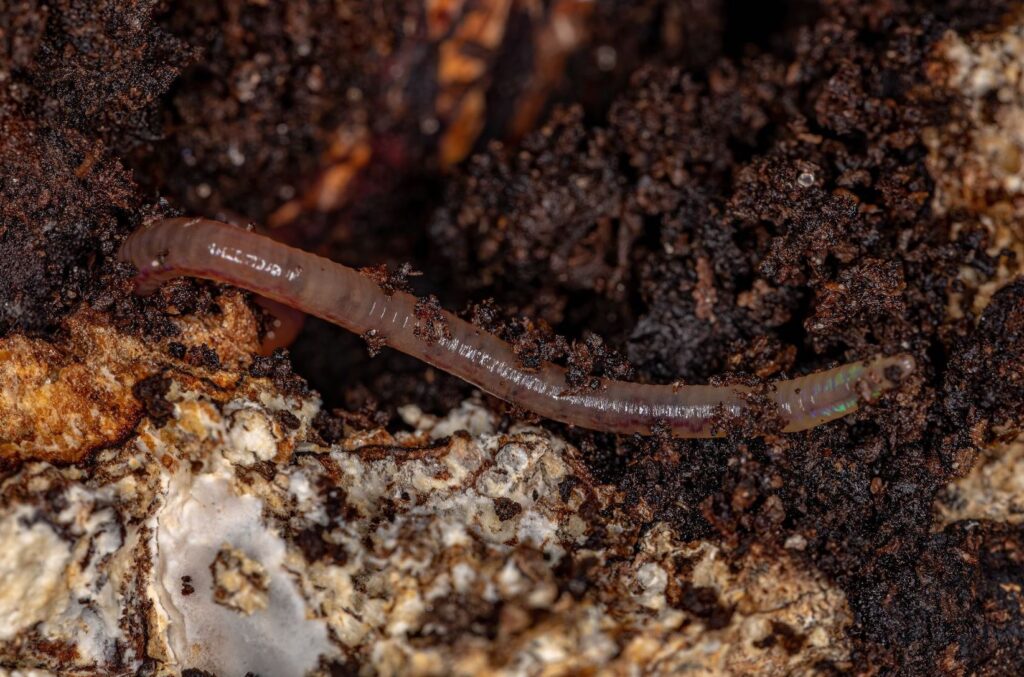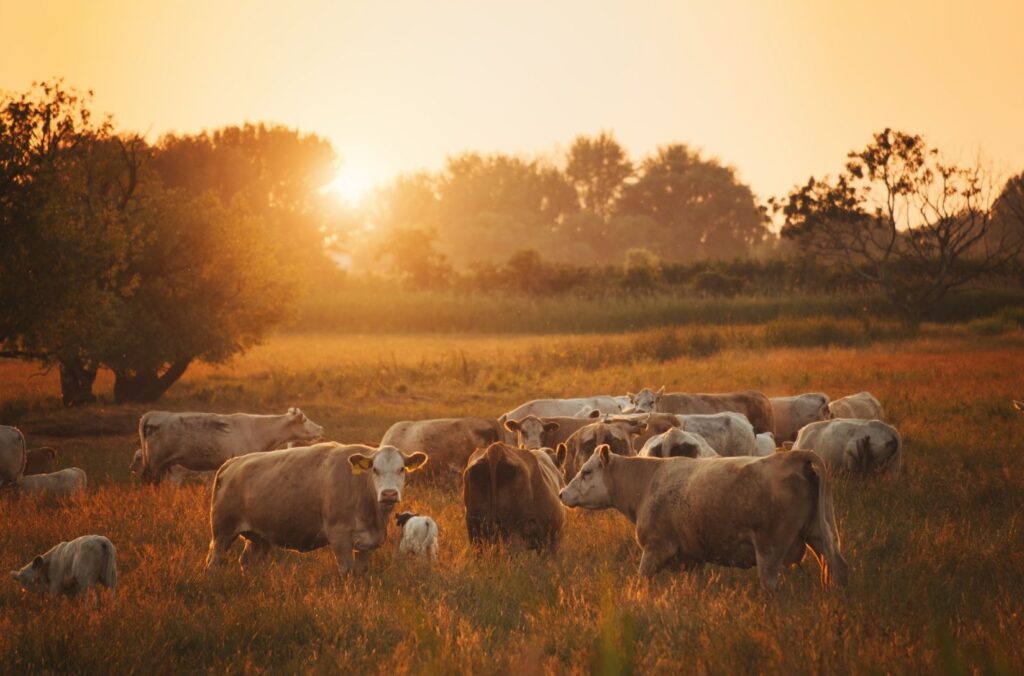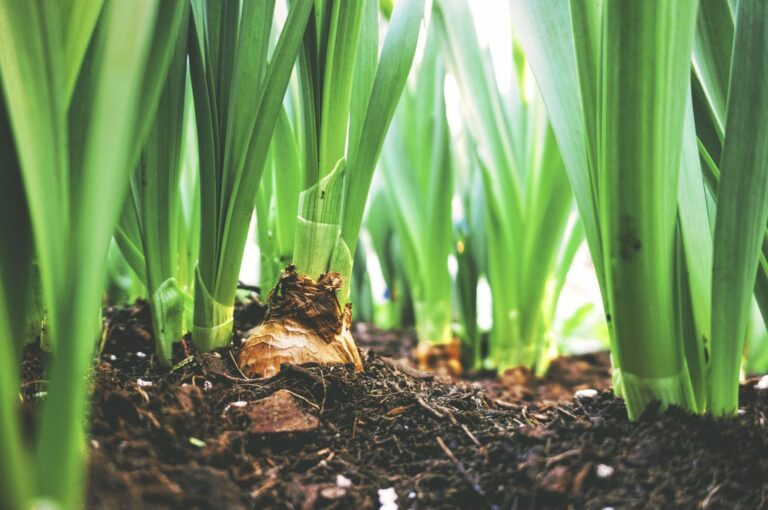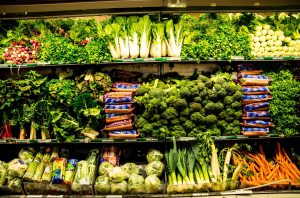To answer that question, we need to take a step back and look at how healthy soil affects the quality of crops and our health generally. Healthy soil is critical to all life on earth, including our own. Not only would healthy soil improve our health directly through the production of more nutritious food, it would solve a large part, if not all, of our climate change problem. In this article we’ll dig into some of the less obvious but far-reaching benefits of healthy soil that you may not have thought about. But first, what is soil anyway, and what does “healthy” mean in the context of a substance most people don’t consider to be alive in the first place?
What is Soil?
Soil is an environment containing a vast diversity of life including animals, insects, plants and the all-important microorganisms of the microbiome such as bacteria, fungi and viruses. It is an ecosystem that is brimming with life when in its natural, healthy state. Healthy soil contains around 75,000 species of bacteria, 25,000 species of fungi, 1,000 species of protozoa, and several hundred species of nematodes (small worms) — nevermind the plants and animals. Together, this overflowing of minute life, aerates and builds structures that support the whole planet. The activities of soil life create what is called a “soil food web” — a community of plants and microbes that work together to recycle carbon and water, exchange nutrients and build rich soil that supports all life below and above ground.

The members of the soil ecosystem can even communicate with each other. Plants and microbes exchange information through chemical compounds that travel through the air pockets in the soil — warning fellow species of invading pests, or pathogens, for example. Plants also ‘talk’ to each other through the communication network created by fungi mycelium that also serves as a method to exchange nutrients for mutual benefits. The soil ecosystem is not only critical to our existence, we are actually a part of that system.
The human-soil connection
Just like soil, people have microbiomes containing viruses, bacteria and fungi. Our microbiomes likely evolved in partnership with the soil’s microbiome. We tend to think of bacteria and viruses as something to get rid of at all costs, but they are absolutely essential for vibrant health. A healthy personal microbiome keeps disease and “bad” bacteria and viruses in check, helps us digest and extract nutrients from our food and produces vitamins — just like the soil microbiome.
Our personal microbiomes have about the same amount of active organisms as soil does — about 39 trillion microbes, but only about 10% of the diversity. The diversity of our microbiome has decreased with modern lifestyles; antibiotics and processed food have taken their toll by either killing off our microbiome directly or by creating an inhospitable environment for these organisms to thrive.
We can increase the diversity and the health of our bionome and health in general through living in contact with and eating the food products of an environment that has maintained its diversity and bionome health. While this article is focused on soil, the same is true for oceans, fresh water, air, sunlight, other people, animals and so on.
Our bodies work in tandem with the soil, sunlight, plants etcetera to provide us with nutrients and other health benefits. Here’s a random smattering of lesser known examples of just how entwined we are with our environment, and how we depend on it for good health:
- Vitamin B12 is actually produced by bacteria in a healthy soil that still contains the mineral cobalt. We used to get much of our B12 from vegetables that weren’t so carefully washed as supermarket veggies are now (as well as from eating animals that had contact with healthy soil).
- We all know that we obtain vitamin D from the sun’s UV rays. But what is less well known is that our mitochondria respond directly to the infrared light in sunlight to produce energy in our cells, make melatonin, set the circadian rhythm,and boost our immune systems. As such we are very much like plants, gaining nutrients from the sun and releasing it as energy.
- People with seasonal allergies can find relief by eating honey that is produced in their immediate area before hay fever season. Traces of the local pollen are contained within the honey — enough to build immunity to the allergen.
- Some natural doctors suggest drastically changing your environment, such as moving to a desert if you live in a rainforest for a few months if you’ve been sick, to alter your microbiome, and positively affect your health.
To put it bluntly, we can only be as healthy as our environment since we are so intimately entwined with it as to be basically the same stuff within the same system.

Soil and the Health of the Planet
Not only is the soil microbiome entwined with our own, it is also connected to larger earth processes, providing stability, resilience and protection. A diverse and healthy soil ecosystem will not only provide better crop yields, with less weeds and pests, but will also help with fire, flood, and drought resistance. This is because soil is one of the main drivers of the earth’s carbon, nitrogen and water cycles.
Healthy soil holds water in its abundant organic matter and air pockets, mitigating damage from floods. Moisture in the soil can also affect rain patterns, mitigating droughts. The more moisture in the soil, the more water can evaporate, which increases the likelihood of rain. This is similar to the way that trees produce rain — through their transpiration. The effects of tree transpiration travel long distances; after a rainfall in the Amazon tree transpiration can produce rainfall thousands of miles away. Since healthy soil supports more plant and tree growth, soil helps with water management through multiple avenues.
Carbon has come away with a bad name recently, but carbon is life on this earth. Nothing lives without carbon. The problem, at least in part, is that carbon isn’t being stored and cycled properly, mainly because we’ve been killing the soil (and forests and oceans), and have thus reduced the earth’s ability to maintain balance.
When we began the heavy and ubiquitous use of pesticides, insecticides and even synthetic nitrogen for agriculture in the 20th century, we started to kill off the microbiome in the soil that supports all life. Some point to the 70s and the large-scale use of glyphosate in products such as RoundUp in agriculture as the turning point, when the killing of the soil was increased to such a level that the earth lost much of its ability to cycle and store carbon.
Soil stores about three times the amount of carbon as is stored in the atmosphere and about twice as much as is stored in trees. Plants absorb C02 from the atmosphere, use some of it for its growth and the rest is stored in the organic matter or humus of healthy soil.
The use of chemical pesticides isn’t the only modern agricultural practice that has been destroying the soil. Practices such as tilling, monocropping and leaving bare soil also destroy the precious microbiome, wash away topsoil and cause the release of excess carbon into the atmosphere.
The good news is that more and more farmers are turning to sustainable or regenerative farming whose practices not only maintain healthy soil, but can actually regenerate it, especially if they include grazing animals into the farm’s ecosystem to mimic how grazing herds fertilize soil in a natural ecosystem.

Let’s Pasta Supports Healthy Soil Management
At Let’s Pasta most of our raw ingredients come from local farms in southern Alberta that use sustainable farming practices. Our pasta products, made from ingredients that are grown in healthy soil, are nutritious, taste great and help support the microbiome of both the soil and those who eat our pasta for the greatest health-giving properties possible. It could be argued that our pasta even contributes to the health of the planet (in a small way)!
Every little bit counts, and we’re proud to be a part of the effort to save our soils.





